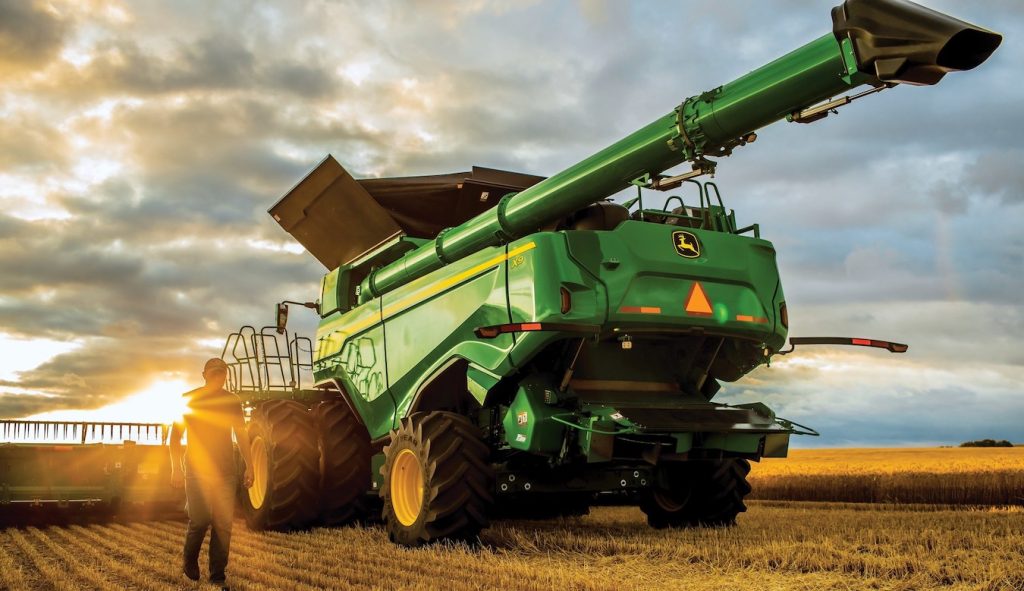
The Opportunity
John Deere, a company that is prolific in its production of heavy agricultural equipment, has decided to link itself more intimately with the space industry. In a slow-developing story since it first floated requests for proposals in 2022, the company has solidified a deal with SpaceX to install Starlink communications equipment on thousands of agricultural machines in the coming decade.
According to Via Satellite1, the system architecture includes “a ruggedized Starlink terminal and a cellular modem to connect agricultural machines to the John Deere Operations Center, the company’s farm management system.” John Deere executives envision this as an evolving construct—a new technology making its debut, Predictive Ground Speed Automation, “is enabled by three satellite-based technologies—GNSS, imagery, and connectivity.” That imagery includes inputs from both overhead satellites and from onboard cameras to aid in crop classification. The overall vision: “a fully autonomous farming system by 2030.”
As to deployment of this technology, the company plans to sell associated equipment through John Deere dealers as an aftermarket kit. Executives were quoted in the Via Satellite article as noting that “there will be measures to ensure the Starlink service is tied to the machine and not used as a home broadband service.”
The Cyber Challenge
First, why should we be concerned about cybersecurity of these newly connected machines? Alternately stated, what value would a cybercriminal gain by hacking into a Starlink-enabled farm tractor? Look back to the three technological capabilities that enable the Predictive Ground Speed Automation—GNSS, imagery, and connectivity. The imagery alone is likely benign in most cases…until it’s not. Pictures of corn are probably harmless. As the technology becomes more widespread, however, there may be privacy or even national security concerns with what else might become visible, and therefore available to a hacker. The connectivity itself might be valuable in that it provides a doorway into the Starlink ecosystem, again harkening back to that idea of increased surface area for cyberattack.
Second, this development promises a large-scale rollout of another addition to the Internet of Things (IoT) that provides additional surface area for cyberattacks. While automation of agricultural equipment is not necessarily new (the article notes a pared-down service has been available over cellular connection since 2011), cybersecurity is not necessarily top of mind when you ask most people what farmers spend their time thinking about. The system must either be sufficiently resilient to withstand use by a minimally cyber-savvy user, or newly onboarded users must be provided with best practices for cyber hygiene as they integrate this new capability to their operations.
Lastly, from a supply chain standpoint, selling the Starlink equipment as an aftermarket kit at John Deere dealers adds an interesting wrinkle. Looking at cybersecurity of the entire supply chain, adding new players is always a risky proposition—you want them to add value, not surface area for cyberattack. Going beyond the notion that users may try to hack their kits into providing home broadband service, there must be some layer of protection at the dealer level to ensure there are no further unsanctioned modifications that may thwart the system’s security.
Source
- Rachel Jewett, “John Deere Execs Say Starlink Solution Lays the Groundwork for the Autonomous Future of Farming,” Via Satellite, https://www.satellitetoday.com/connectivity/2024/04/03/john-deere-execs-say-starlink-solution-lays-the-groundwork-for-the-autonomous-future-of-farming/ , original article written 03 April 2024, accessed 23 June 2024. ↩︎